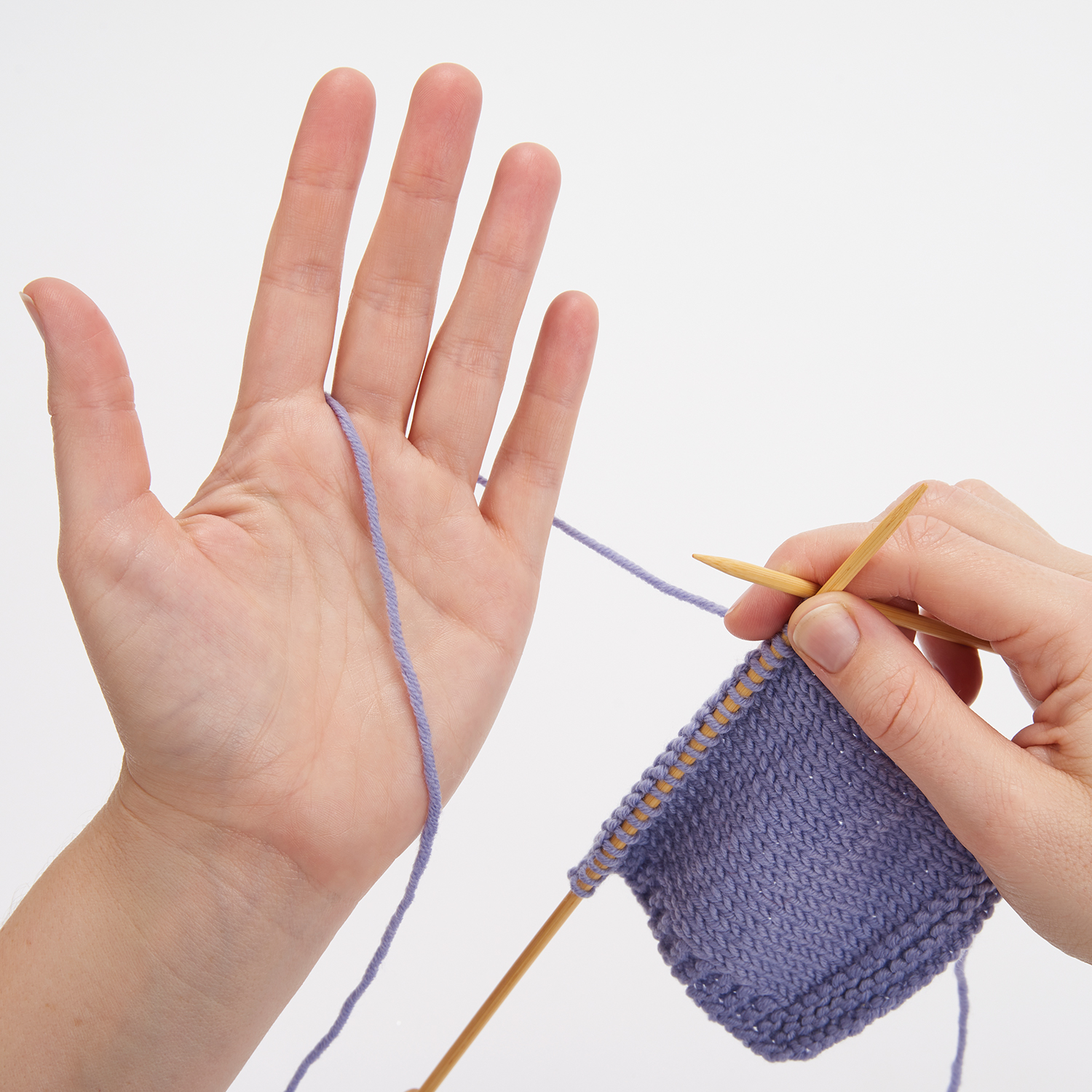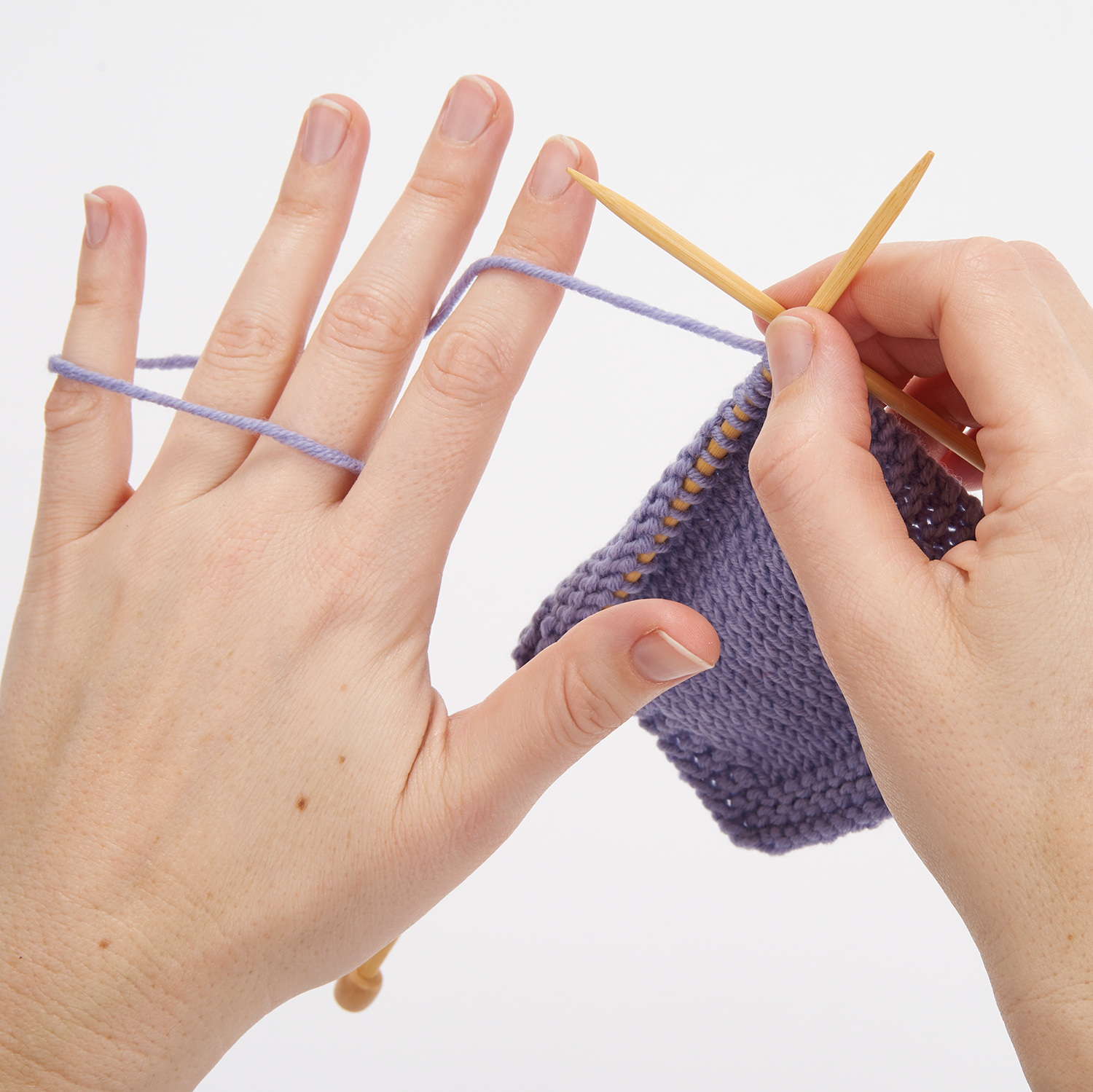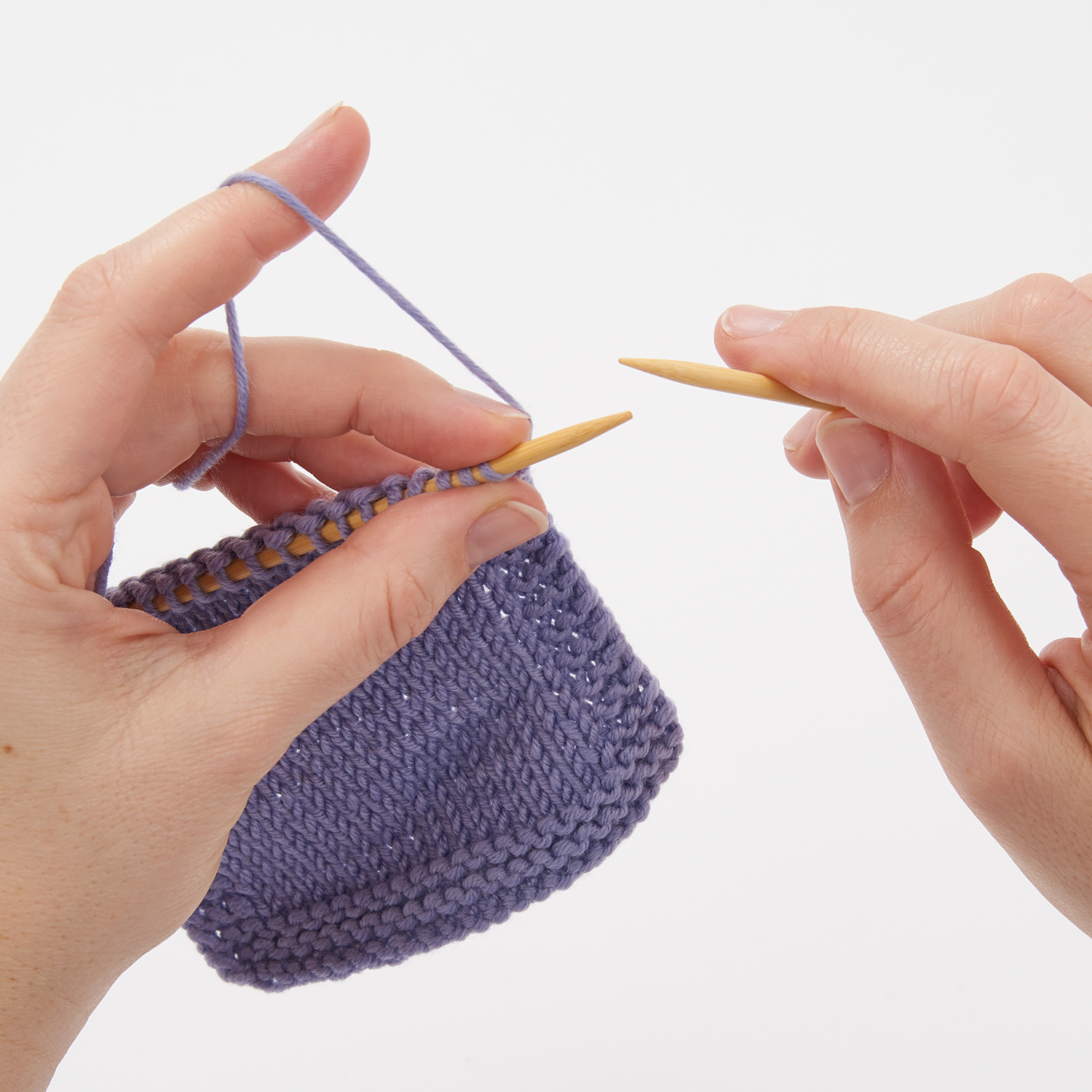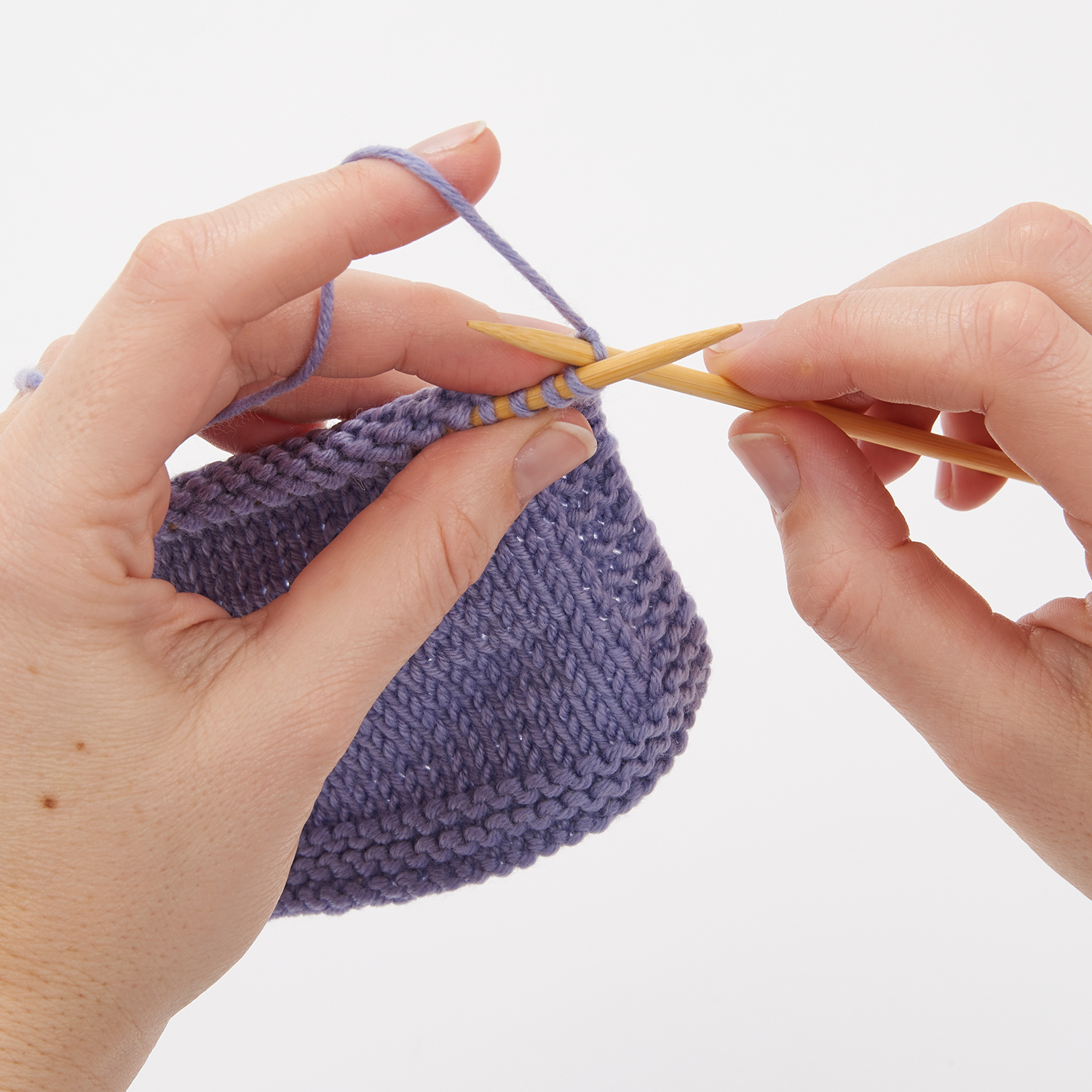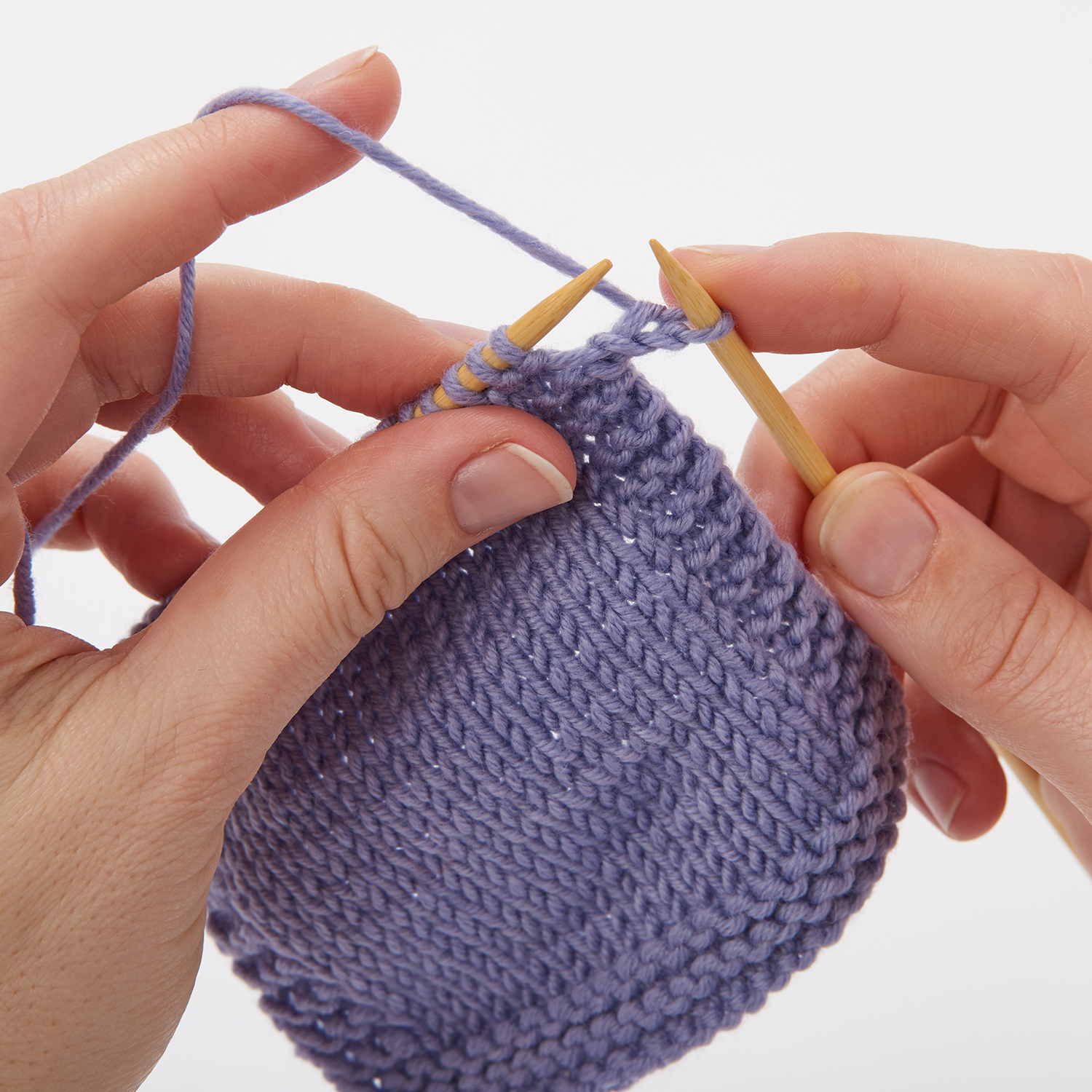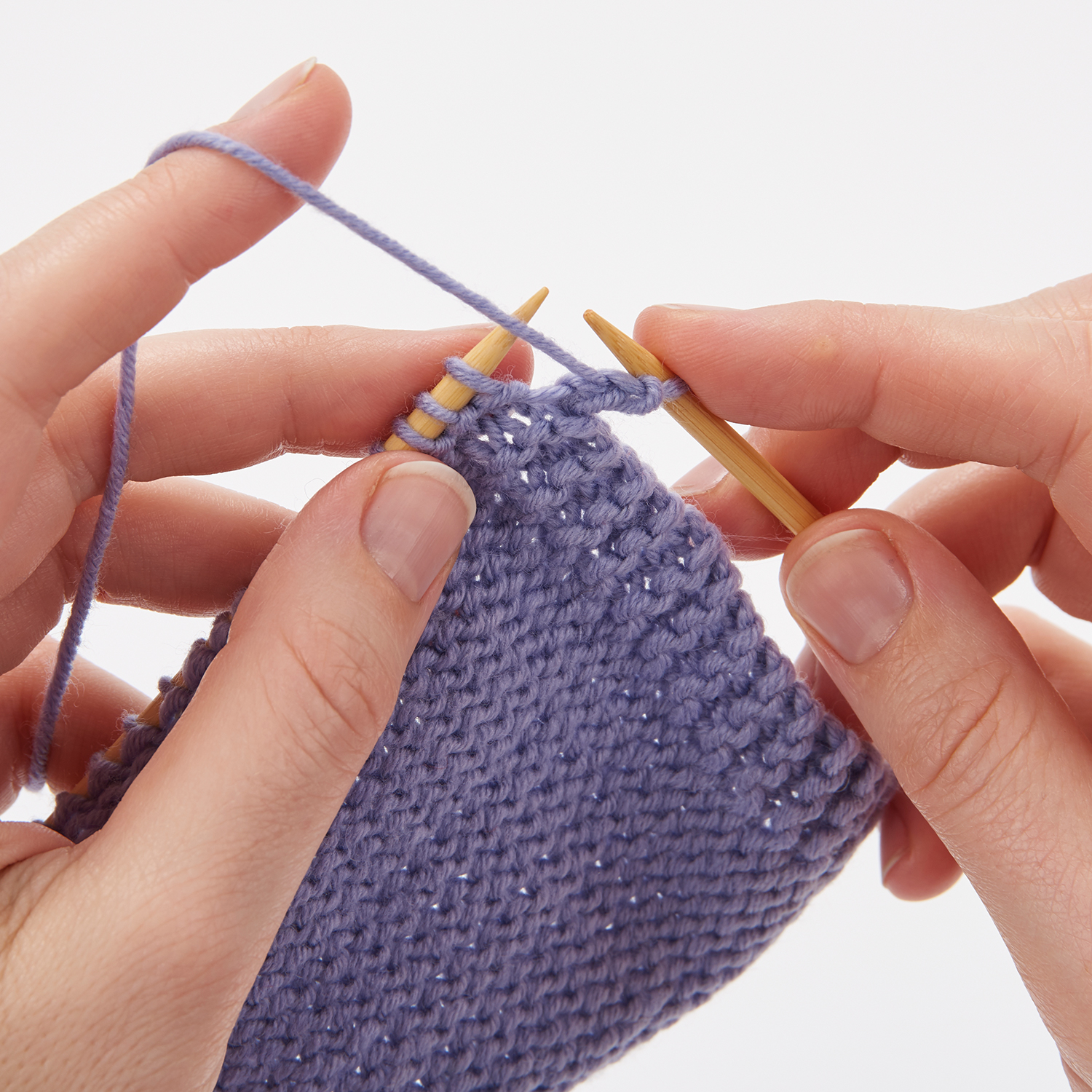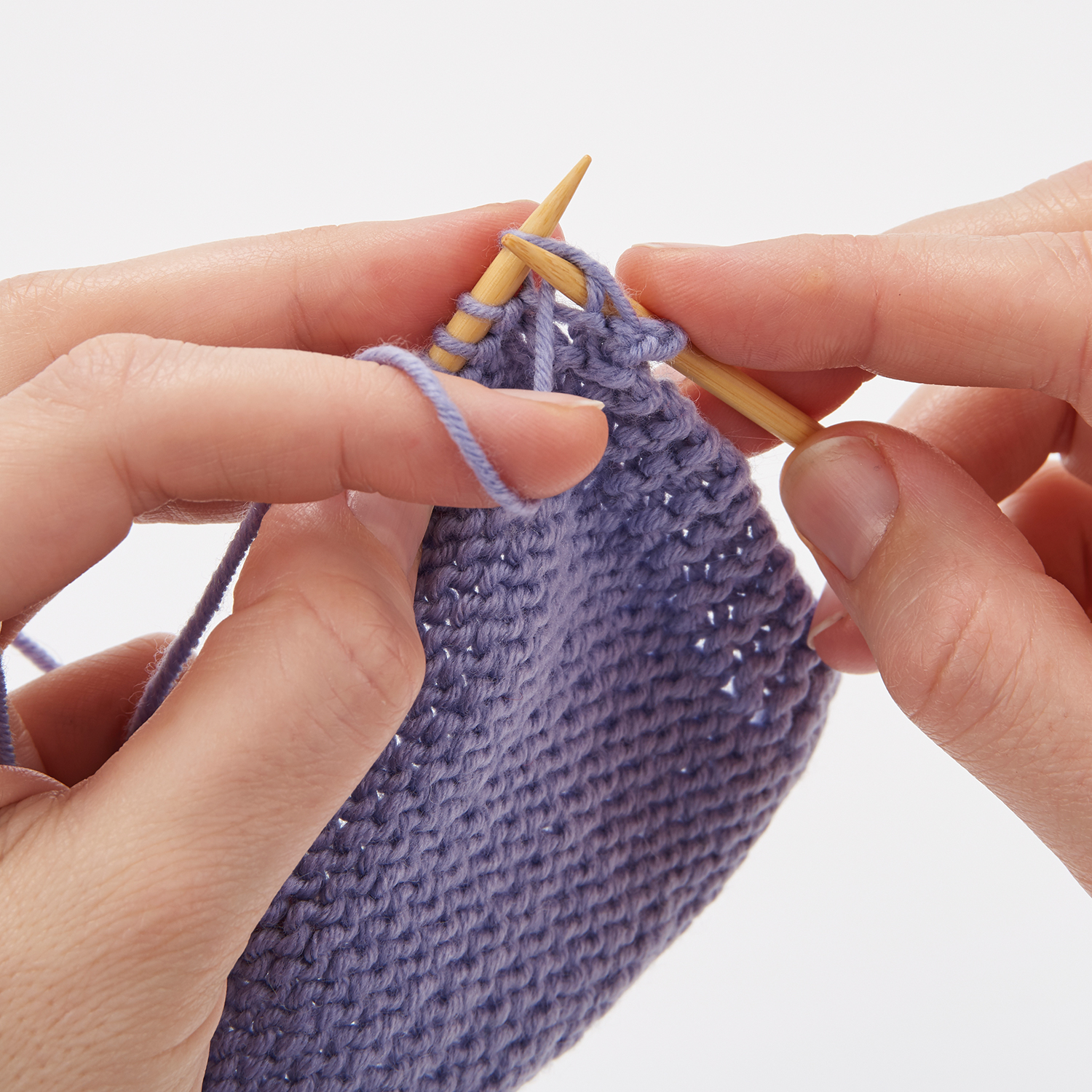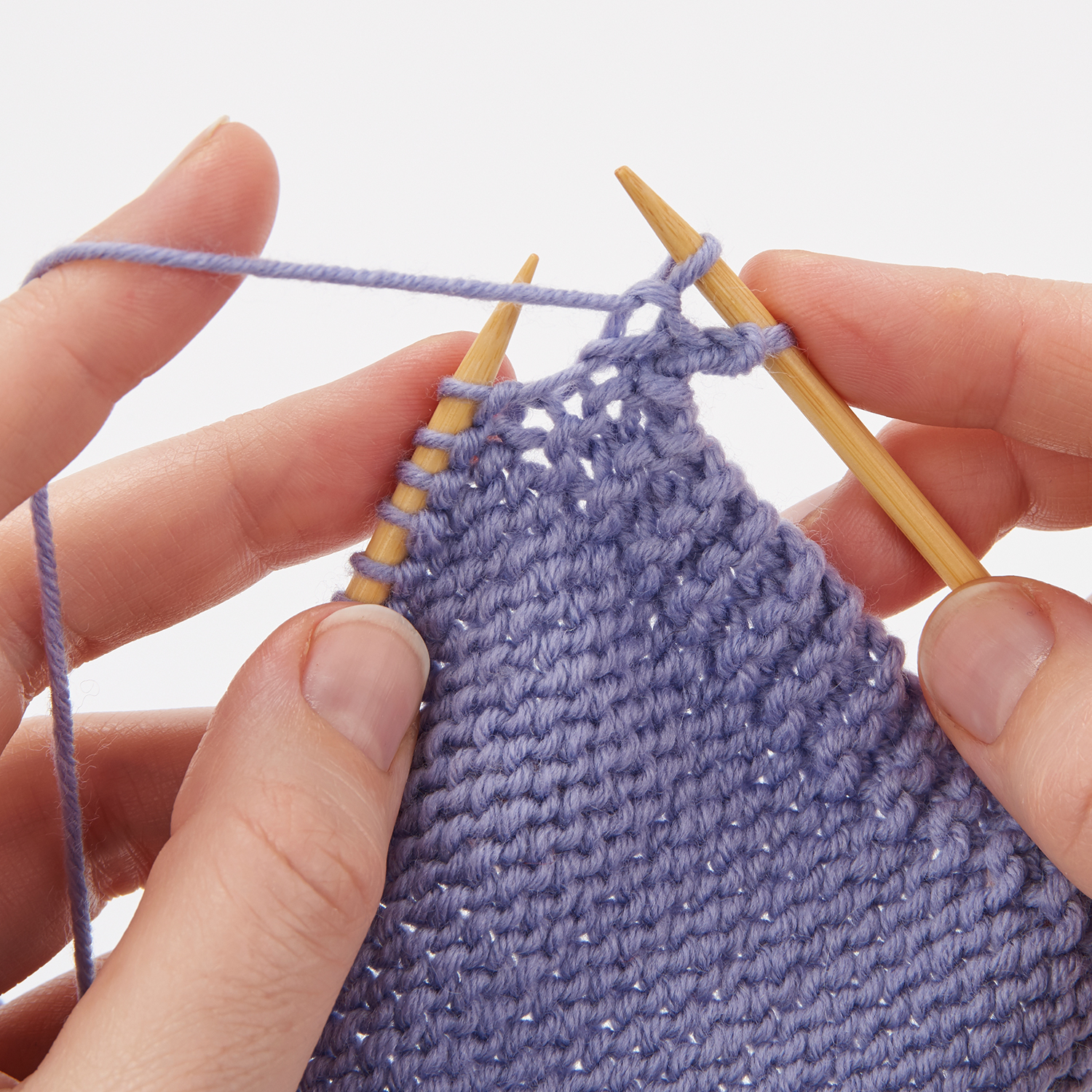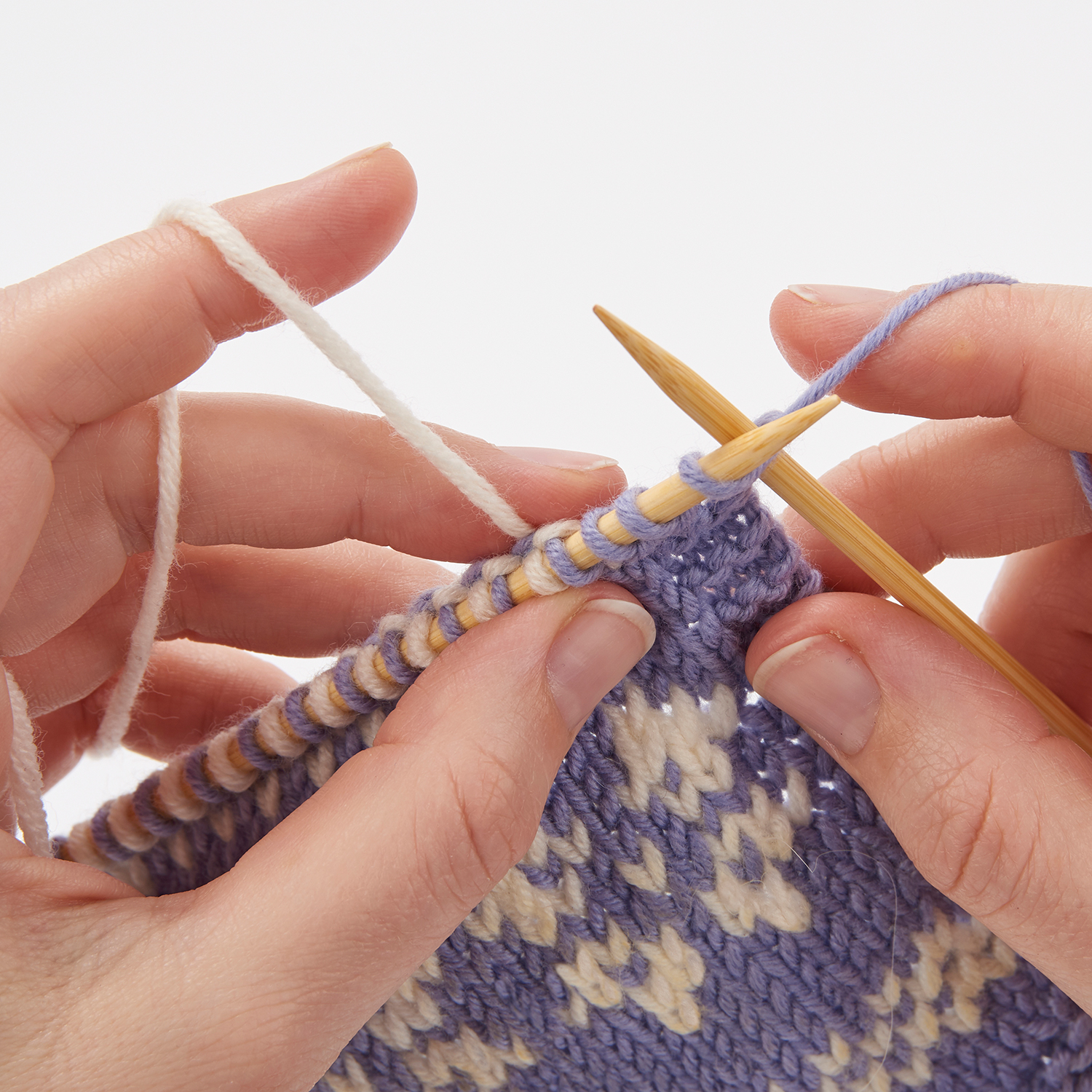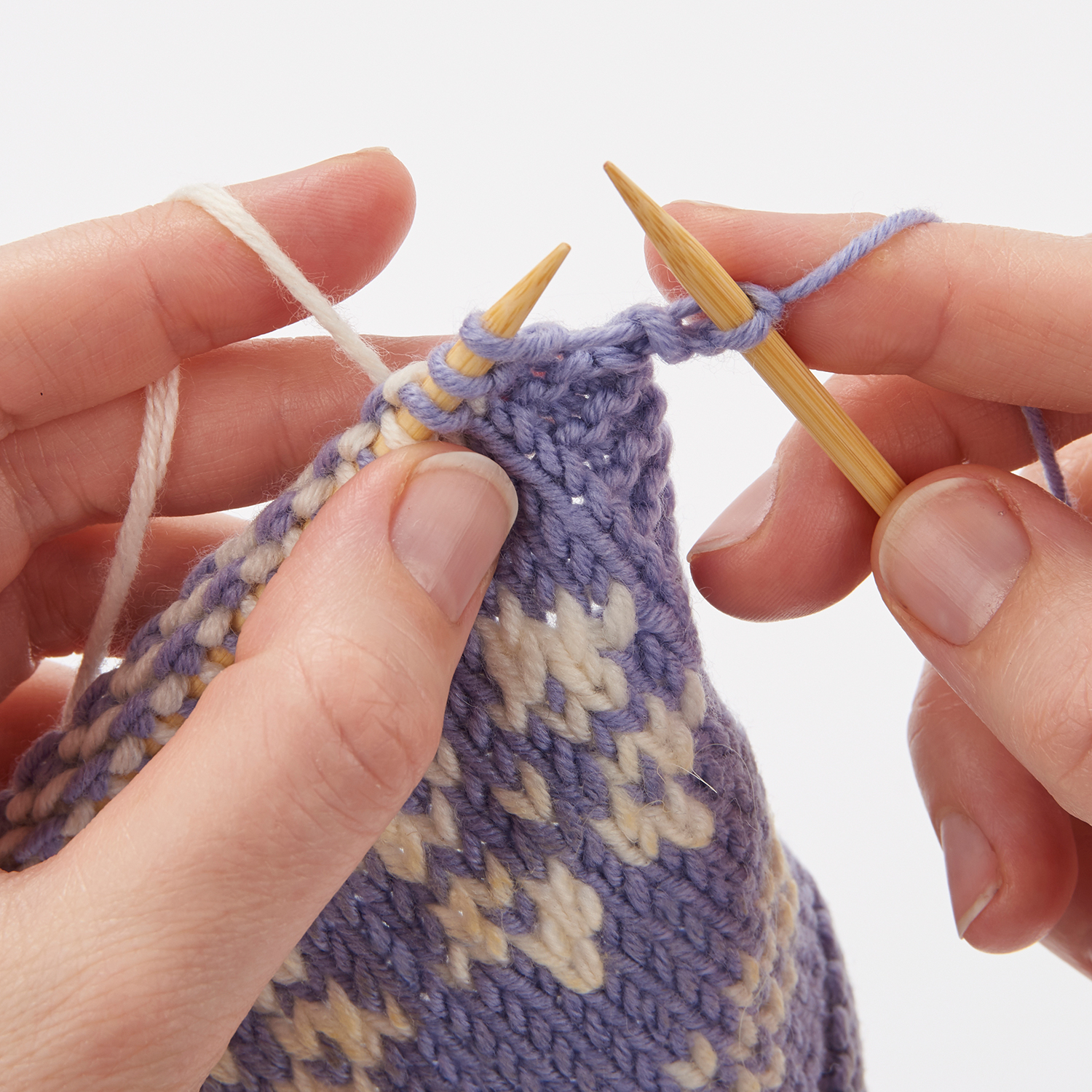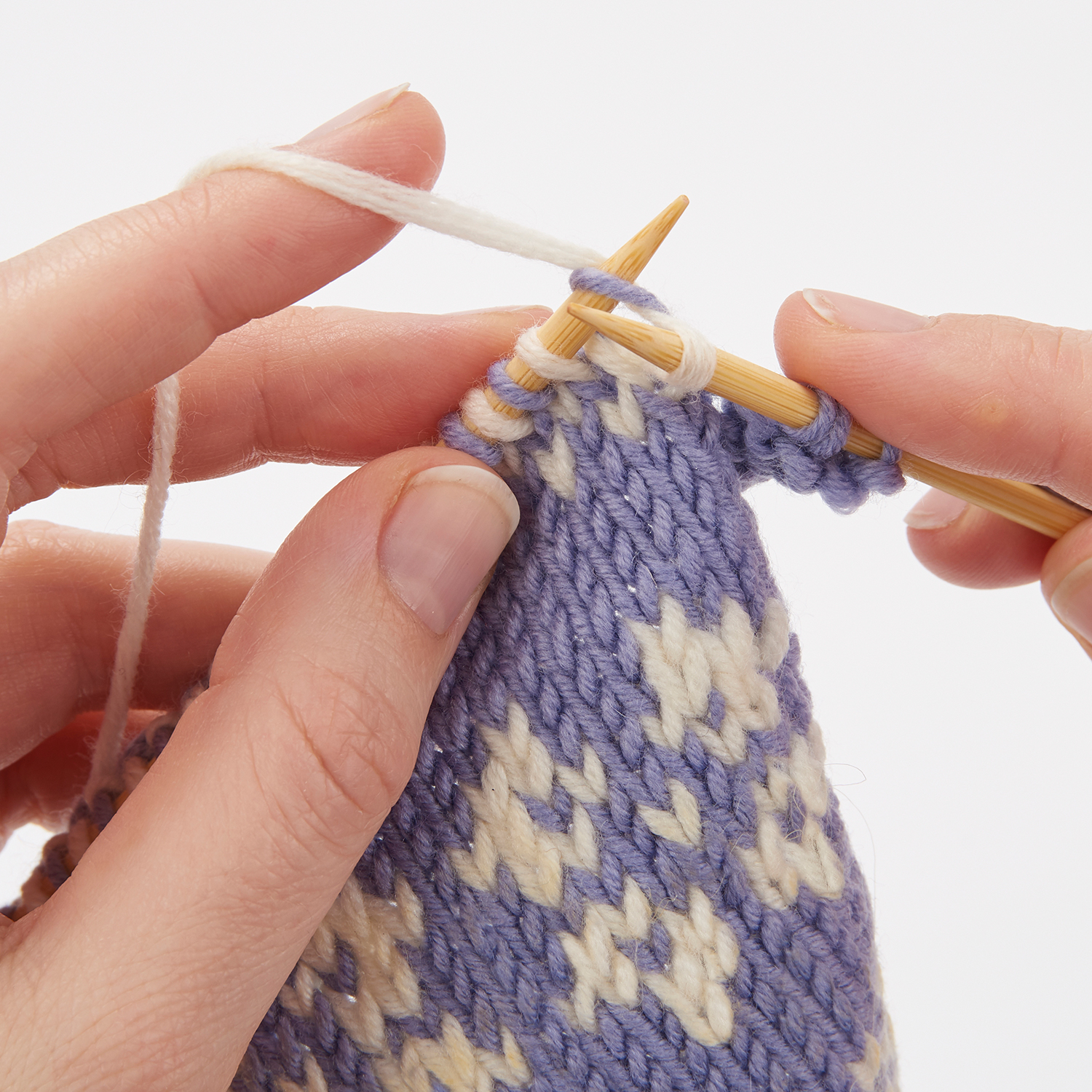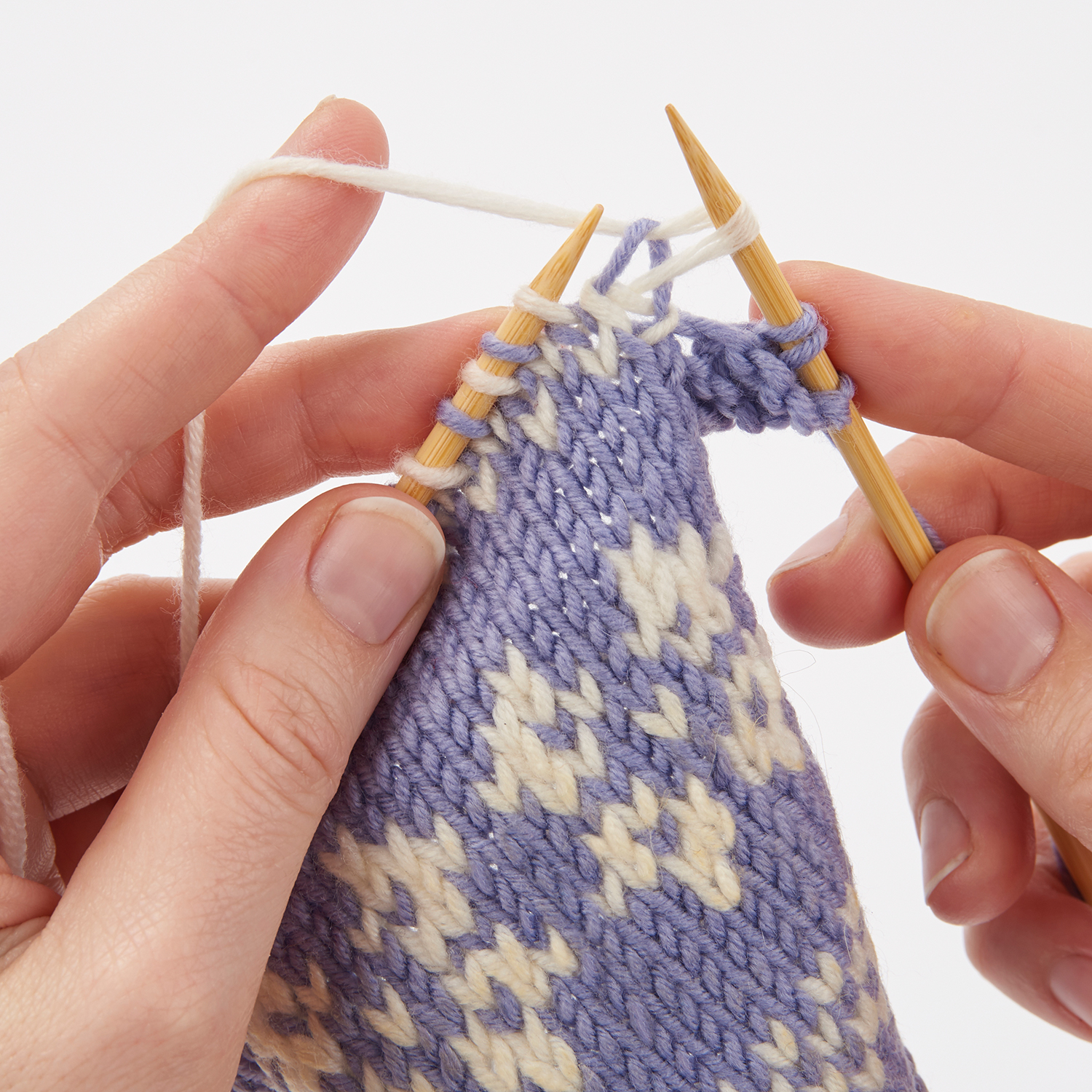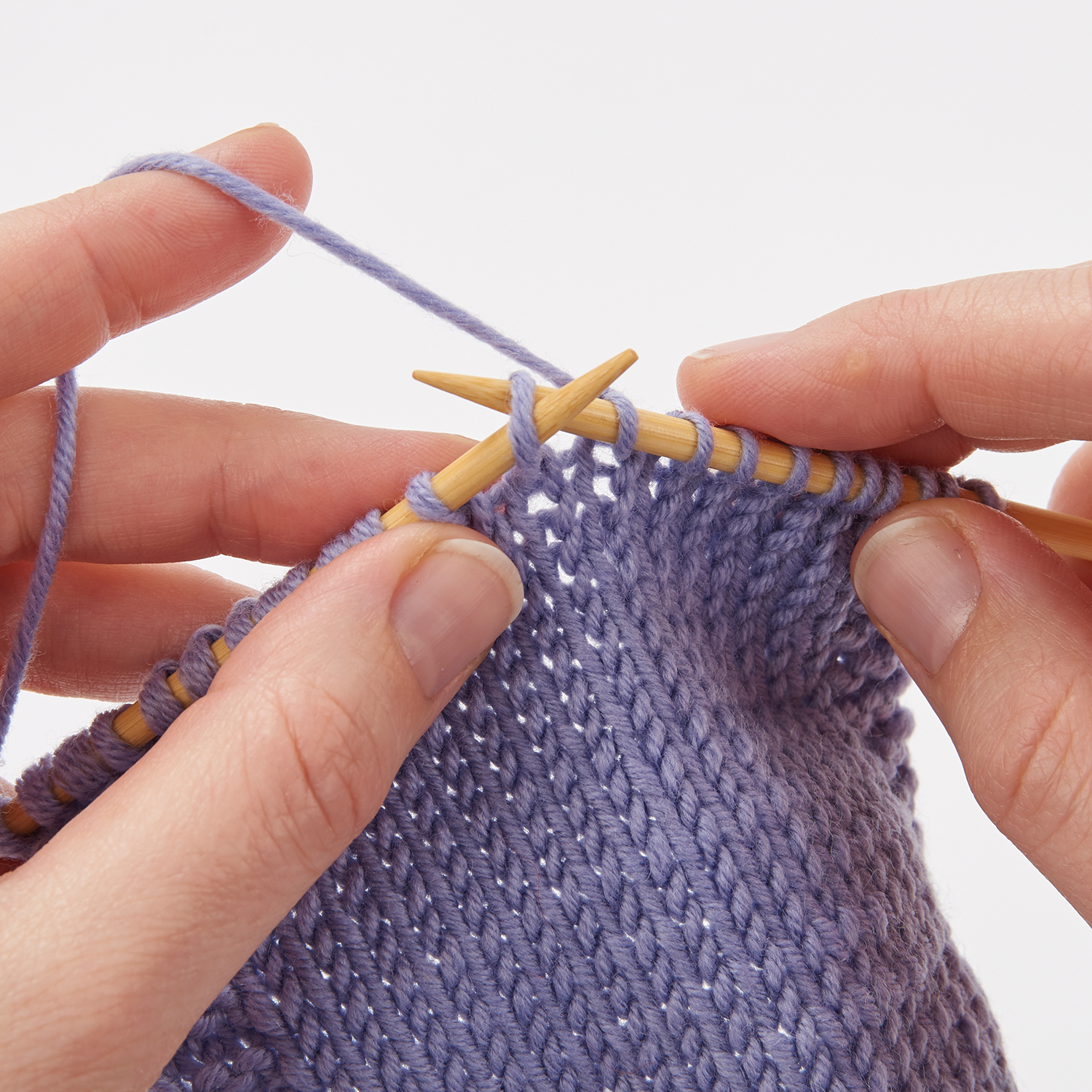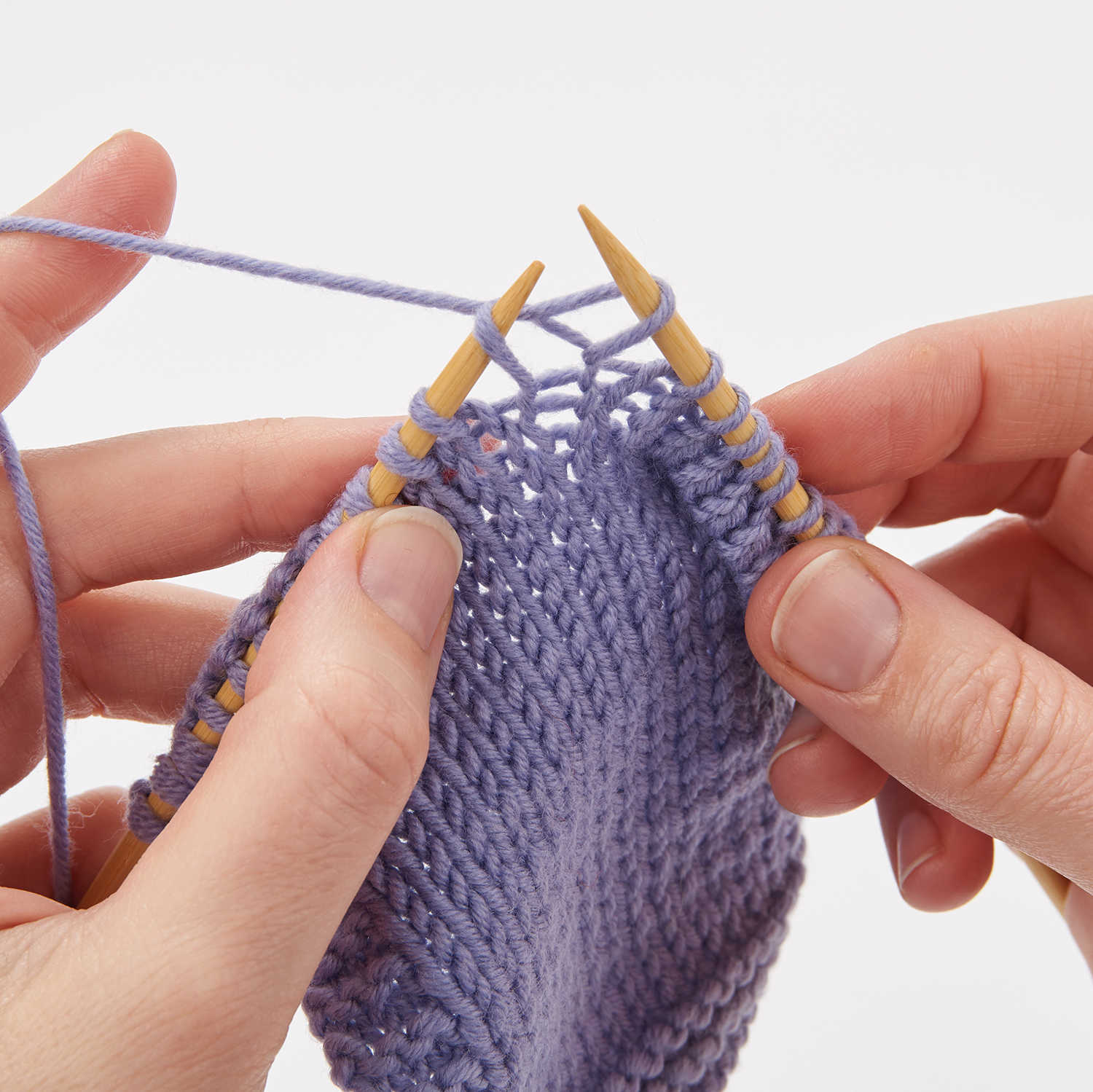Have you ever spotted someone knitting, but looking almost like they’re knitting backwards? Then you’ve probably already seen Continental knitting in action. British knitters were traditionally taught to knit with the yarn in their right hand, ‘throwing’ the yarn around the working needle. But across the Channel, knitters mainly worked with yarn in their left hand, ‘picking’ the working yarn, and typically knitting faster and with more ease. Sound too good to be true? Well, it does take a little practice to switch styles, but it’s definitely worth a go. Here’s how…
Why should I try Continental knitting?
Although the world’s fastest knitter, Shetland’s Hazel Tindall, uses British-style knitting, for your average knitter, Continental style is usually faster. This is because the movement used to make a stitch the Continental way is smaller, making a shorter distance between the start and finish point of each stitch. Many modern knitters are also switching to Continental-style knitting because they find it’s kinder to their hands and arms, particularly when knitting for long periods – the smaller, shorter movements create less stress. Continental-style knitting also makes stranded colourwork a cinch, as you can hold a colour in each hand, keeping your knitting neat and preventing your colours getting tangled.
How hard is it to switch?
If you’ve been comfortably knitting British style for years, switching to Continental style may seem like too much bother. While the technique used feels fairly intuitive to most knitters, you are likely to notice a significant change in tension at first. This is totally normal and the only way to get back to a ‘normal’ tension is with practice. This will take a different amount of time for each knitter, so it’s not a good idea to embark on a big project where the finished size is critical, for example a garment, as your tension will probably change over the course of the project. However, a blanket, or even a scarf will show the change in tension fairly minimally. Don’t make a pair of socks, one in British style and one in Continental style, as you will almost certainly find one of the pair is too big! Many knitters find that even with practice their Continental-style knitting remains a little looser, so if this applies to you, remember to go down a needle size to get the correct tension, and always swatch for anything that needs to fit someone.
Can I change to continental mid project?
Generally speaking, it’s best to use a single ‘main’ style for each project. However, there are some instances where British style knitting can feel easier than Continental style. Some knitters find that casting on and off, and picking up stitches are all easier British style, and it’s fine to switch for sections like this, where a different technique is needed, but generally it’s best to use the same method for a particular section, for example, borders, or long pieces of stocking stitch.
How to get the correct tension
If you’ve been knitting in the British style for years, you probably tension your yarn in your right hand without even thinking about it. How you do it will be completely unique to you. So how do you tension your yarn in your left hand for Continental knitting? Again, just like British-style knitting there is no one right way of tensioning your yarn. Just to get you started, here’s one of our favourite techniques for wrapping the yarn in your left hand in a way that allows the yarn to flow smoothly through your fingers, while still giving you control over your knitting. Read our step by step guide below.
